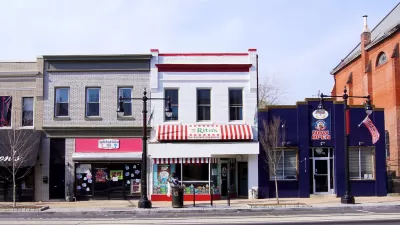A higher share of Americans are renters than at any point in decades. Neighborhoods all over the country, especially in downtowns, have many more renters than they did in 2010.

Recent analysis by RentCafe sheds light on how the growing share of renters in the U.S. population—a trend reflected in national statistics for years now—is transforming neighborhoods.
According to this analysis which uses the latest data from the U.S. Census Bureau, 101 U.S. zip codes switched to majority renter in the past decade. An article by Andrea Neculae for RentCafe provides more details on the analysis, including infographics to reflect the trends and locate the parts of the country with most new majority renter neighborhoods.
Philadelphia has the most new majority renter zip codes of any U.S. city, with seven, followed by Memphis and Houston, each with six. The analysis also ranked zip codes by the percentage of change in the number of renters. The 43240 zip code in Columbus, Ohio leads the list with a 157 percent change, followed by 60606 in Chicago and 78256 in San Antonio, with 151 percent and 132 percent, respectively.
The analysis notes that downtown areas, in particular, became more popular for young renters over the past decade—as reflected in the zip codes with the largest changes in renter populations since 2010.
FULL STORY: Renting Out the Neighborhood: 101 Zip Codes Switch From Homeowner to Renter Majority

Study: Maui’s Plan to Convert Vacation Rentals to Long-Term Housing Could Cause Nearly $1 Billion Economic Loss
The plan would reduce visitor accommodation by 25,% resulting in 1,900 jobs lost.

North Texas Transit Leaders Tout Benefits of TOD for Growing Region
At a summit focused on transit-oriented development, policymakers discussed how North Texas’ expanded light rail system can serve as a tool for economic growth.

Using Old Oil and Gas Wells for Green Energy Storage
Penn State researchers have found that repurposing abandoned oil and gas wells for geothermal-assisted compressed-air energy storage can boost efficiency, reduce environmental risks, and support clean energy and job transitions.

A Bronx Community Fights to Have its Voice Heard
After organizing and giving input for decades, the community around the Kingsbridge Armory might actually see it redeveloped — and they want to continue to have a say in how it goes.

Houston Mayor Promises Dedicated Austin Street Bike Lane After Public Backlash
Although the one-way bike lane won’t be protected by physical barriers, the proposal is an improvement over the mayor’s initial plan to only include sharrows on the Austin Street project.

How Atlanta Built 7,000 Housing Units in 3 Years
The city’s comprehensive, neighborhood-focused housing strategy focuses on identifying properties and land that can be repurposed for housing and encouraging development in underserved neighborhoods.
Urban Design for Planners 1: Software Tools
This six-course series explores essential urban design concepts using open source software and equips planners with the tools they need to participate fully in the urban design process.
Planning for Universal Design
Learn the tools for implementing Universal Design in planning regulations.
Borough of Carlisle
Caltrans
Heyer Gruel & Associates PA
Institute for Housing and Urban Development Studies (IHS)
City of Grandview
Harvard GSD Executive Education
Toledo-Lucas County Plan Commissions
Salt Lake City
NYU Wagner Graduate School of Public Service





























